“There is a foolish corner in the brain of the wisest man.”- Aristotle
What Is Left Brain – Right Brain Theory?
According to the theory of left-brain or right-brain dominance, each side of the brain controls different types of thinking. Additionally, people are said to prefer one type of thinking over the other. For example, a person who is “left-brained” is often said to be more logical, analytical, and objective, while a person who is “right-brained” is said to be more intuitive, thoughtful, and subjective. In psychology, the theory is based on what is known as the lateralization of brain function. So does one side of the brain really control specific functions? Are people either left-brained or right-brained? Like many popular psychology myths, this one grew out of observations about the human brain that were then dramatically distorted and exaggerated. The right brain-left brain theory originated in the work of Roger W. Sperry, who was awarded the Nobel Prize in 1981. While studying the effects of epilepsy, Sperry discovered that cutting the corpus collosum (the structure that connects the two hemispheres of the brain) could reduce or eliminate seizures. However, these patients also experienced other symptoms after the communication pathway between the two sides of the brain was cut. For example, many split-brain patients found themselves unable to name objects that were processed by the right side of the brain, but were able to name objects that were processed by the left-side of the brain. Based on this information, Sperry suggested that language was controlled by the left-side of the brain. Later research has shown that the brain is not nearly as dichotomous as once thought. For example, recent research has shown that abilities in subjects such as math are actually strongest when both halves of the brain work together. Today, neuroscientists know that the two sides of the brain work together to perform a wide variety of tasks and that the two hemispheres communicate through the corpus coliseum. “No matter how lateralized the brain can get, though, the two sides still work together,” science writer Carl Zimmer explained in an article for Discover magazine. “The pop psychology notion of a left brain and a right brain doesn’t capture their intimate working relationship. The left hemisphere specializes in picking out the sounds that form words and working out the syntax of the words, for example, but it does not have a monopoly on language processing. The right hemisphere is actually more sensitive to the emotional features of language, tuning in to the slow rhythms of speech that carry intonation and stress.”
In one study by researchers at the University of Utah, more 1,000 participants had their brains analyzed in order to determine if they preferred using one side over the other. The study revealed that while activity was sometimes higher in certain important regions, both sides of the brain were essentially equal in their activity on average. “It’s absolutely true that some brain functions occur in one or the other side of the brain. Language tends to be on the left, attention more on the right. But people don’t tend to have a stronger left- or right-sided brain network. It seems to be determined more connection by connection,” explained the study’s lead author Dr. Jeff Anderson.
The Right Brain
According to the left-brain, right-brain dominance theory, the right side of the brain is best at expressive and creative tasks. Some of the abilities that are popularly associated with the right side of the brain include:
- Recognizing faces
- Expressing emotions
- Music
- Reading emotions
- Color
- Images
- Intuition
- Creativity
The Left Brain
The left-side of the brain is considered to be adept at tasks that involve logic, language and analytical thinking. The left-brain is often described as being better at:
- Language
- Logic
- Critical thinking
- Numbers
- Reasoning
Researchers have demonstrated that right-brain/left-brain theory is a myth, yet its popularity persists. Why? Unfortunately many people are likely unaware that the theory is outdated. Today, students might continue to learn about the theory as a point of historical interest – to understand how our ideas about how the brain works have evolved and changed over time as researchers have learned more about how the brain operates. While over-generalized and overstated by popular psychology and self-help texts, understanding your strengths and weaknesses in certain areas can help you develop better ways to learn and study. For example, students who have a difficult time following verbal instructions (often cited as a right-brain characteristic) might benefit from writing down directions and developing better organizational skills. The important thing to remember if you take one of the many left brain/right brain quizzes that you will likely encounter online is that they are entirely for fun and you shouldn’t place much stock in your results. In general, the left and right hemispheres of our brain process information in different ways. While we have a natural tendency towards one way of thinking, the two sides of our brain work together in our everyday lives. The right brain of the brain focuses on the visual, and processes information in an intuitive and simultaneous way, looking first at the whole picture then the details. The focus of the left brain is verbal, processing information in an analytical and sequential way, looking first at the pieces then putting them together to get the whole.
Left brain thinking is verbal and analytical. Right brain is non-verbal and intuitive, using pictures rather than words. The best illustration of this is to listen to people give directions. The left brain person will say something like “From here, go west three blocks and turn north on Vine Street. Go three or four miles and then turn east onto Broad Street.” The right brain person will sound something like this: “Turn right (pointing right), by the church over there (pointing again). Then you will pass a McDonalds and a Walmart. At the next light, turn right toward the Esso station.” Though right-brain or non-verbal thinking is often regarded as more ‘creative’, there is no right or wrong here; it is merely two different ways of thinking. One is not better than the other, just as being right-handed is not ‘superior’ to being left-handed. What is important is to be aware that there are different ways of thinking, and by knowing what your natural preference is, you can pay attention to your less dominant side to improve the same.
By learning abacus through the systematic training approach at UCMAS, children can fully realize their potential by activating both sides of their brain. By consciously using the right side of our brain, we can be more creative. More so , because left brain strategies are the ones used most often in the classroom, right brain students sometimes feel neglected. By activating the power of both hemispheres, a child will be able to retain knowledge better and become proficient in any subject, especially math.
SO WHAT IS THE DIFFERENCE BETWEEN THE RIGHT AND LEFT SIDE OF THE BRAIN?
Certain bodily functions are assigned to either the right or left side of the brain. The brain’s right hemisphere controls the muscles on the left side of the body, while the left hemisphere controls the muscles on the right side of the body. In general, the left hemisphere is dominant in language: processing what you hear and handling most of the duties of speaking. It’s also in charge of carrying out logic and exact mathematical computations. When you need to retrieve a fact, your left brain pulls it from your memory. The right hemisphere is mainly in charge of spatial abilities, face recognition and processing music. It performs some maths, but only rough estimations and comparisons. The brain’s right side also helps us to comprehend visual imagery and make sense of what we see. It plays a role in language, particularly in interpreting context and a person’s tone.
The Right Brain
- Sees, thinks and processes information in whole, concrete images, therefore, it does not use a step-by-step method to reach a conclusion.
- Has difficulty understanding the parts of whole images without the whole object present. For example if a teacher is using an orange cut up into pieces to demonstrate fractions there should also be a whole orange in view of the student to keep the “whole” picture in their minds.
- Has difficulty thinking in sequences and has to be trained in sequencing skills, using concrete materials and visual aids. Examples of aids are: blocks with letters or numbers, flashcards, multiplication tables, coins for understanding money, clock faces with removable numbers, etc.
- The right brain is reality-based because it thinks in whole, concrete images; that is, it thinks in whole pictures and does not think in the abstract or parts. Therefore, it cannot work easily with abstract symbols like words and numbers.
- Thinks multi-dimensionally, or comprehending a subject on many different analytical levels. Therefore a right-brained person will not fully understand a concept until all aspects of the subject are put together to form the whole image or conclusion.
- Has difficulty focusing on and organizing a large body of information such as a school project with written material, drawings, photos, references, etc. This is because a right-brained person is always using a multi-dimensional thinking process and can get confused where to start on a project and how to put it together in a logical, step-by-step format.
- Thinks emotionally, intuitively, creatively, globally and analytically
- May have difficulty with the verbal or language arts skills of hand printing, phonics, spelling, reading, writing sentences and paragraphs
- May also have difficulty understanding and working with mathematical concepts of time, measurements, size and weights, money, fractions, number facts, word problems, algebra and geometry
- May not be able to follow oral and written instructions without a visual demonstration. Needs all three senses involved: listening, seeing and touching.
- Reacts best to visual images, oral discussions and handling objects
- May excel in music, art, drawing, athletics and coordinated physical movement.
- May be naturally mechanically-minded always taking things apart, repairing or improving them without instruction or even coming up with new inventions.
- Remembers faces, places and events very well but not the names.
- May have a photographic memory for images, reading selections, oral discussions, places visited and musical works.
The Left Brain
- Thinks in abstract letters, numbers, written words and formulas
- Excels in mathematics, reading, spelling, writing, sequencing and the use of verbal and written language
- Is strongly verbal and reacts best to verbal input
- Responds well to phonics when learning to spell and read
- Handles sequencing of numbers, letters, words, sentences and ideas easily
- Does not need to visualize in whole, concrete images to understand ideas, both concrete and abstract
- Sees the parts within the whole first, then arrives at the whole concept of a given idea.
Look at the picture below for about 30 seconds and have a think about what you see. Then read below to evaluate the results of what you saw and find out if you are left or right brain orientated.
If you see the lady turning clockwise you are using your right brain
If you see the lady turning anti-clockwise you are using your left brain
Some people do see both ways, but most people see it only one way. See if you can make her go one way and then the other by shifting the brain’s current. BOTH DIRECTIONS CAN BE SEEN. If you look away, she may switch from one direction to the other. We find that if you just look at her feet or relax and look at the floor where the reflection shows, she will switch direction! Experimentation has shown that the two different sides, or hemispheres, of the brain are responsible for different manners of thinking.
Differences between the Left & Right Brain
Left Brain Right Brain
Logical Intuitive
Sequential Random
Analytical Holistic
Rational Synthesizing
Objective Subjective
Looks at part Looks at whole
Most individuals have a distinct preference for one of these styles of thinking. Some, however, are more whole-brained and equally adept at both modes. In general, schools tend to favor left-brain modes of thinking, while downplaying the right-brain activities. Left-brain scholastic subjects focus on logical thinking, analysis, and accuracy. Right-brained subjects, on the other hand, focus on aesthetics, feeling, and creativity.
SEVEN CAUSES OF DYSLEXIA
First Cause:
Difficulty understanding any concept without starting with the “whole picture”. The right brain learner thinks and understands the world in whole concrete images. If the whole concrete image has not been presented first and is available when the student is starting to learn the parts, the parts will not make any sense and the brain will discard them. The right brain needs to start with and see whole images and whole concepts, not the separated parts.
Second Cause:
Difficulty with understanding the parts separate from the whole image of the word. If these students cannot see the parts within the whole and the whole image at the same time, they cannot make sense out of pieces or parts of information. For example, demonstrating fractions. Use two oranges, keep one whole, cut the other up first into halves then into quarters, but always have the visual image of the whole orange present. The student must understand that the word fraction stands for the equal parts you have created from the whole.
Third Cause:
Difficulty with the skills of hand printing, spelling, reading and composing sentences correctly. This usually means that the right brain cannot transfer its concrete images adequately to the left brain which works with abstracts and uses the language of words and numbers. The right-brain thinker cannot learn, analyze or work with what they do not understand or can process. This is a strong indication that although the students are taking in information and attempting to store it in whole concrete images, they are not using it for thinking or learning that requires abstract processing. Instead they are memorizing the image of the information and giving it back verbatim in their answers.
They can do this easily if they are expected to give one word answers or complete a sentence, but thinking out cause and effect is next to impossible because it is an abstract task that means nothing to them and requires proper training to cope with it.
Fourth Cause:
Difficulty with sequencing (put in a logical order) numbers, letters, words, sentences, ideas, thoughts. If the students can neither see the “parts within the whole” in their correct sequence, they cannot spell, read, write sentences and paragraphs, nor do mathematical calculations.
Fifth Cause:
Difficulty understanding the abstract. The right-brain learner does not always understand the abstract words, thoughts and ideas they hear or read as they cannot easily turn them into whole concrete images they can visualize. If the dyslexic student cannot complete a thought in a visual image, they will have problems saving it and storing it in long term memory because it does not make sense. The right-brain thinker attempts to understand what is being read or spoken by catching the concrete nouns and active verbs, or by using intuition to fill in the blanks or reason it out.
Sixth Cause:
Difficulty with building a memorized word list.It is very important for all students, including dyslexics, to have a memorized sight list of words that is appropriate to their grade level. These words must be memorized beforehand so the brain does not have to lose time during reading figuring out how the word is decoded, what it sounds like or means. If the student spends too much time in decoding and recognizing the individual words, comprehension of the story is lost.
The student is forced to reread the passage over and over to understand what they have just read. Their short-term memory can consequently dump the information when the right-brain has struggled too long to decode the words and find context in what they are reading. Therefore, the student will not be able to answer any questions about their reading assignment because the student has not processed the information correctly or stored it in long-term memory.
Seventh Cause:
Difficulty in following instructions. Dyslexic students need very specific and complete instructions on how to do an assignment, project, test or complete a lesson. Again this is about the necessity to see the whole picture. They need to understand how the assignment starts and ends. They need to know: where to put their name, date and title; what kind of paper to use; pen, pencil or computer; the date to hand it in; how the answers should look (for example: one word answers, a paragraph or a page); and any other issues that may be of concern for the student. Once the student has all the information they require they have the “whole picture” of what to do and can now see the parts so they are ready to start the assignment. Also the entire lesson or explanation must be given at one time on the same day. If this does not happen, the students will forget everything they should have learned to be able to work on and complete the assignment. Dyslexic students should always be allowed and encouraged to ask questions to fill in any gaps they have in understanding what they are required to do.
A WORKOUT FOR THE BRAIN
The right and left hemisphere of the brain develop differently and have complementary strengths. The average person only uses around 10% of their brain, as most routine tasks carried out during work or learning predominantly use the left hemisphere. As a result, we do not make sufficiently balanced use of both hemispheres when thinking and learning. The effects of this have a major impact on every individual and on society as a whole. We are barely aware of what we could achieve if we were to think and learn using both hemispheres to their full potential – we are leaving tremendous possibilities and abilities untapped. Many problems in our education systems, in business and in our personal lives can be traced back to this.
Brain training: What effect can it have?
Truly successful learning can only occur when the two hemispheres of the brain, with their different ways of thinking, are used in full conjunction with each other. The bridge of neural fibers that makes this interhemispheric communication possible is the corpus callosum. With targeted training, both hemispheres can work together more effectively, improving the brain’s ability to learn and take in new information. Here are some of the ways you could benefit from this kind of training in your professional and everyday life:
- Remember where you put things and remember names more easily
- Learn new things more quickly
- Retain what you have learned and be able to recall it more quickly
- Work more productively
- Improve your concentration
- Improve your ability to multitask
- Understand other people’s emotions better
- Improve your creativity when tackling new challenges
- Get better at doing sums in your head
Therefore, to improve your quality of life and professional success, it is worth investing a little time to train your brain to use both hemispheres together more effectively. Three 10-minute sessions a week is all it takes – you should begin to notice the results after 2-3 months. In fact, after completing a 10-minute training unit, you will already feel the benefit after just an hour of work. As formal schooling focuses heavily on left-brain skills, the games lend themselves to use by school pupils who want to maintain a good hemispheric balance. The games will also be suitable for use by older people who want to stay mentally sharp. At the end of every week of training, the user will be shown a personal Connectedness Index (CI) that indicates how strong the collaboration between the two hemispheres of their brain is.
What does intelligence have to do with the size of the brain?
Gregor Brand writes: “Intelligence is a collective term for cognitive ability. It is often erroneously correlated with the size of the brain. ‘Intelligence’ describes how clever, learned or shrewd someone is. Factors primarily associated with the left hemisphere are commonly linked to intelligence. The reason for the belief that intelligence is linked to the size of the brain is obvious. The brain is the organ that controls functions like language and conscious thought, closely associated with intelligence. Ever since this has been common knowledge, people have speculated whether having a larger brain leads to greater intelligence. Nevertheless, this notion is unfounded. Regardless of whether and how the size and weight of the brain are related to intelligence, it is agreed that no direct correlation to individual intelligence can be derived. This is because the brain is not only responsible for the types of functions measured by intelligence tests, it also interacts constantly with the body in a variety of ways.”
Can intelligence be measured by intelligence tests?
Yes. However, “intelligence” is such a loose term, encompassing all kinds of different fields of human achievement, that a strict definition will never be possible.
What is an intelligence test?
An intelligence test aims to measure someone’s intelligence by testing various areas of the brain. It takes gender differences and the different strengths of the two hemispheres into account, and its result thus provides an overall impression of cognitive ability.
What effect can brain training have?
Brain training is an attempt to train and strengthen mental skills. It can take the form of IQ training or more generalized intelligence training. Different parts of the brain can be trained individually, or the whole brain at once. Unlike our brain test, brain training aims to boost cognitive skills by stimulating the gray matter and improving performance on a systematic basis.
Memory training: what is that all about?
Memory training focuses on training and optimizing the brain and its recall ability. To achieve the best results, you need a good understanding of how your brain and memory work, including whether you are more of a left-brain or right-brain thinker. Knowing this allows for targeted memory training that can help you remember things better and work more productively.
Do video games negatively affect mental performance?
On the contrary – a recent study by the Max Planck Institute for Human Development and the Charité University Psychiatric Clinic at St. Hedwig Hospital, Berlin, suggests that playing video games enlarges areas of the brain important for spatial orientation, memory formation, strategic thinking and fine motor skills, and that the beneficial effects of playing computer games can also help in the treatment of mental illnesses. To find out the effect of video games on the brain, the scientists had a group of adults play the game ‘Super Mario 64’ for 30 minutes a day for two months,” explains the Max Planck Institute’s press release on the study, “while a control group was not allowed to play the game. Participants’ brains were then measured using magnetic resonance tomography (MRT). Compared to the control group, the game-players had increased grey matter – the part of the brain containing neural cell bodies. Enlargement was seen in the right hippocampus, prefrontal cortex and parts of the cerebellum. These areas of the brain are of central importance in spatial orientation, memory formation, strategic thinking and digital fine motor skills. Interestingly, the enlargement was greater in the test subjects who most enjoyed playing the game.”
Personality tests: why are they so popular?
Personality is important to all of us – people everywhere are keen to develop skills and build on their strengths. Personality tests are available in countless numbers online and are a regular feature in women’s magazines. People always want to know: what am I doing right? What are my weaknesses? What are my strengths, and how strong are they? How can I improve my personality, and which aspects in particular? Ultimately, the key questions to ask yourself are: how much am I prepared to change, and what is my personal motivation to do so? It’s a topic that fascinates people, and the media always finds new ways to appeal to this foible by creating personality tests to attract and hopefully retain interest.
How do I find the right job? Can the brain test help me find a position that suits me?
The brain and its hemispheric balance undoubtedly have an effect on the jobs people are happiest in. However, the position you hold and are able to rise to in your chosen field also plays an important role in how strong each hemisphere can become. In turn, training the hemispheres to work together more effectively is sure to improve work performance and thus career prospects.
Click start to check out which side of your brain is dominant
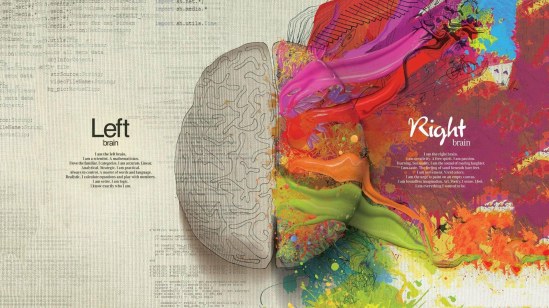
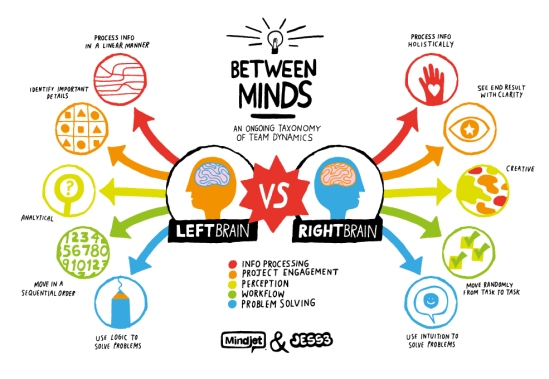
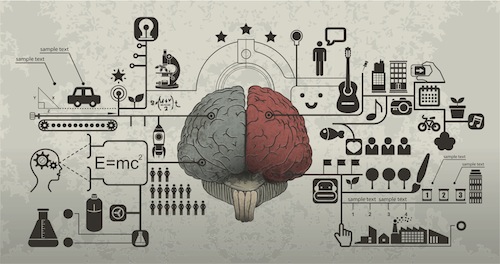
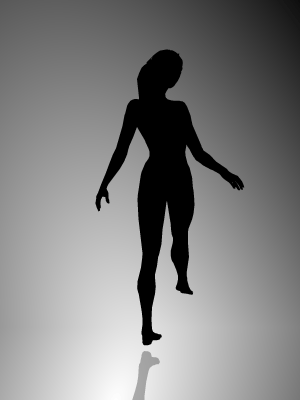
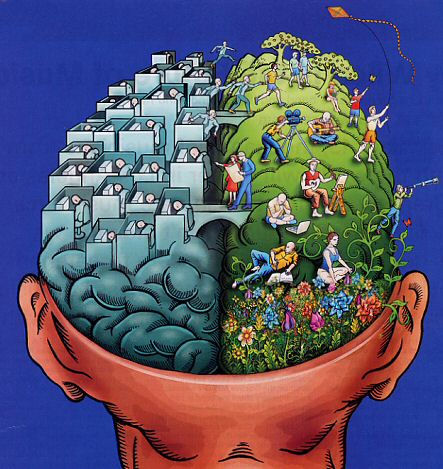

I understand the theory is outdated, but I fit the left-brain profile perfectly. Those skills allowed me to become a highly accomplished computer programmer and written communicator. Conversely, a near total lack of right-brain skills made me a very pathetic art student and musician. Can’t have everything, I guess!
LikeLike
If so, you are one of the 8% left-brainers in the world
LikeLike
Hmm, that makes sense. I’ve always been an odd duck.
LikeLike
It really does my friend
LikeLiked by 1 person
Reblogged this on "OUR WORLD".
LikeLike
Having read your post a few days ago, I was obviously inspired to craft one of my own, on the same topic — though not nearly as in depth as your well-researched article. And you, left or right dominant?
LikeLike
i am pleased that i was a reason to born a new masterpiece from you. it will sound silly if i dare to compare my articles with your spectacular writings. Neither, my friend. it is one whole brain but i can switch from left to right or vice verse. just test yourself by looking at “spinning lady” and try to use both, left and right brain. You are left brain I suppose, arent you?
LikeLike
So much time passes so quickly. I think well of you often and hope that life is good and that you are happily busy. You haven’t posted to your blog in nearly three months. Your fascinating and informative posts are missed. And yes, JS, I am a predominantly left-brained being. I long for ways in which to allow my right-brain to emerge more actively and fully, so that it would align more closely with my heart and emotions. When it’s convenient and if you feel inclined, I’d enjoy hearing how you are.
LikeLike
hello my friend… it has been so long time we have lost communicating with you… but i am sure you are doing well over there… after i have done my masters research paper i came back to my country and have dived into work.. i got a job over my hood… would be nice to hear from you my friend Eric 🙂
LikeLike
How good to hear from you. Thank you for creating time to reply, JS! It sounds as though you have had some significant/good changes in your life. I trust you are pleased with them. I would be happy to share a more lengthy update with you. Are you still as the same email address that we have previously used to communicate? Until I hear back, wishing you all the best!
LikeLike
i have a lot to share with you my friend.. yeah, send me an email, wanna hear some from you.. i am still at that email address… warm wishes to you Eric
LikeLike